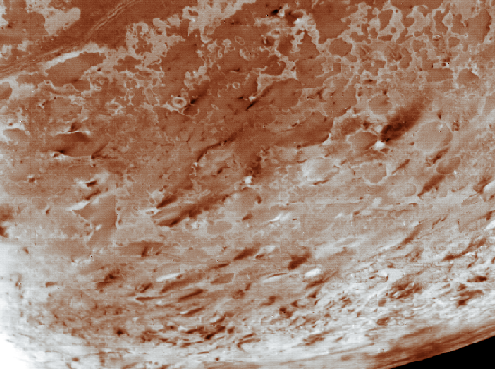Astronomy Picture of the Day
Discover the cosmos! Each day a different image or photograph of our fascinating universe is featured, along with a brief explanation written by a professional astronomer.
Posted on 06/13/2003 5:29:03 AM PDT by petuniasevan
Discover the cosmos! Each day a different image or photograph of our fascinating universe is featured, along with a brief explanation written by a professional astronomer.
Explanation: In the 1960s spring came to the southern hemisphere of Neptune, the Solar System's outermost gas giant planet. Of course, since Neptune orbits the Sun once every 165 earth-years, it's still spring for southern Neptune, where each season lasts over four decades. Astronomers have found that in recent years Neptune has been getting brighter, as illustrated in this Hubble Space Telescope image made in 2002. Compared to Hubble pictures taken as early as 1996, the 2002 image shows a dramatic increase in reflective white cloud bands in Neptune's southern hemisphere. Neptune's equator is tilted 29 degrees from the plane of its orbit, about the same as Earth's 23.5 degree tilt, and Neptune's weather seems to be dramatically responding to the similar relative seasonal increase in sunlight -- even though sunlight is 900 times less intense for the distant gas giant than for planet Earth. Meanwhile, summer is really just around the corner, coming to Neptune's southern hemisphere in 2005.
Diameter: 30,777 miles
Mass: 17.2 Earth mass
Average Temperature: -330 degrees Fahrenheit
Distance from Earth: 2.79 billion miles
Distance from Sun: 2.8 billion miles
Length of Day (Rotation Period): 16 hours
Length of Year (Orbital Period): 164 years
Magnitude: 7.9
Angular Size: 2.3 seconds of arc
Number of Known Moons: 11 (3 discovered in January 2003)
Last Visited by: Voyager II, 1989

Here is the Voyager II photo of those nitrogen geysers on Neptune's moon Triton.The dark elongated smudges are the geysers.

Click the Solarviews link for more information on the enigmatic moon Triton.

Disclaimer: Opinions posted on Free Republic are those of the individual posters and do not necessarily represent the opinion of Free Republic or its management. All materials posted herein are protected by copyright law and the exemption for fair use of copyrighted works.